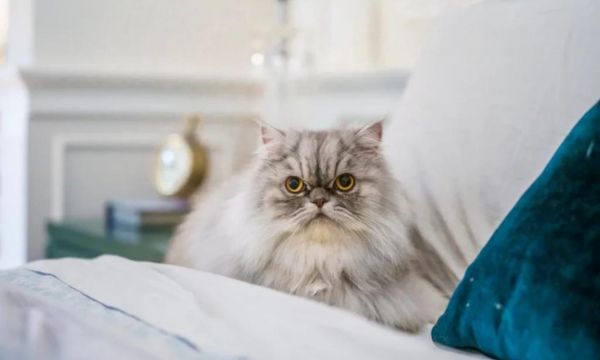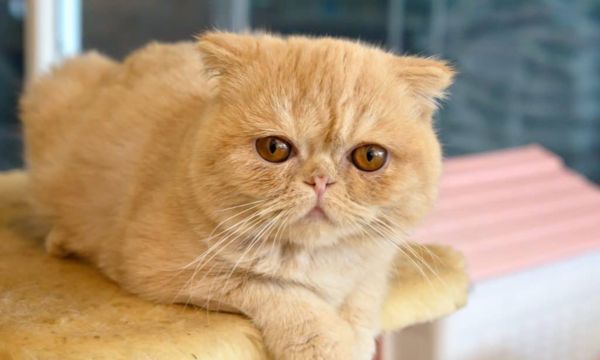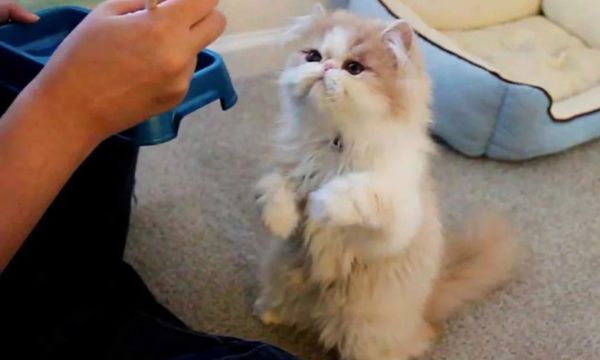Food is paramount in the care of a Persian cat.
Feeding your cat a balanced diet is good for his physical health, but can also affect the shine of his coat, the amount of energy he has and his general health.
As a responsible pet owner, you need to know how to properly feed your Persian cat.
How to Determine What Persian Cat Needs to Eat:
Because of their build, Persian cats have special nutritional needs. Their long coat requires frequent grooming and a nutrient-rich diet helps keep the coat in good condition.
In addition, their flat faces can sometimes lead to dental problems, making eating well even more important to them.
Focus on providing Persian cats with a diet high in animal protein, low in fat and with the right vitamins and minerals to meet their nutritional needs.
Protein is needed to maintain muscle mass, while fat is also important for healthy skin and shiny hair. Water is also important, especially for Persian cats who regularly have bladder problems.
Cat Food Options:
Knowing the different types of cat food is important if you want to make a good choice. Dry food is easy to use and helps keep your dog’s teeth healthy by preventing tartar build-up.
Wet canning gives cats more water, which is good for their health and for cats that don’t drink much. There is also semi-moist cat food, where the moisture is between dry food and wet food.
Learn How to Read Cat Food Labels:
Every pet owner should learn how to read cat food labels. Start by looking for foods that contain high-quality sources of protein, such as chicken, turkey or fish.
Avoid foods that contain a lot of fillers, false colors, flavors or preservatives. Choose brands that put natural products first and don’t add anything you don’t need.
Protein Quality and Quantity:
Most of the food for Persian cats consists of protein. High-quality protein sources provide you with the amino acids you need to keep your muscles in good shape, keep your immune system functioning properly and stay healthy.
Make sure the protein content in your cat’s food is appropriate for your cat’s age, activity level and health.
Healthy Fat is a Source of Healthy Fur and Energy:
Healthy fat is important for your Persian cat’s energy levels and coat health. Omega-3 and Omega-6 fatty acids promote skin health, reduce inflammation and make the coat shiny and smooth.
Look for foods containing these beneficial fatty acids to help your cat’s overall health.
Carbohydrates: The Right Mix for Energy and Digestion
Although cats are “obligate carnivores,” meaning most of their food must come from animal sources, they can still eat some carbohydrates to give them energy and help with digestion.
Choose food sources that are healthy and easy to digest, such as sweet potatoes, peas, or brown rice.
Vitamins and Minerals for Overall Health:
A balanced cat food should contain a good mix of vitamins and minerals that cats need. These nutrients contribute to a healthy immune system, strong bones and a healthy body.
Find foods that are suitable for Persian cats and provide them with all the nutrients they need.
Special Considerations: Weight Management and Allergies
If your Persian cat has health issues such as obesity or allergies, choose foods that can help with these issues. The Weight Control formula is designed to help your cat maintain a healthy weight without giving up important nutrients.
A diet with only a few ingredients can help cats with sensitivities or allergies to certain foods.
How to Choose between Wet and Dry Food:
Whether you should feed a cat wet or dry food usually depends on what it likes, its health and its lifestyle. Wet food helps your cat stay hydrated, which is good for urinary tract health.
This is especially true for Persian cats who often have urinary problems. Dry food can help keep your pet’s teeth in good condition and is convenient for pet owners who like to eat freely.
Advantages and Disadvantages of Homemade Diets:
Some cat owners make their own food so they have more control over what their cats eat. This approach works, but requires careful planning and consultation with a doctor or veterinary nutritionist to ensure all nutritional needs are met.
Home cooked diet should be balanced and done properly to avoid deficiencies.
Get Used to New Food:
If you decide to change your Persian cat’s diet, do it slowly so as not to cause an upset stomach. Cats can have trouble changing diets quickly.
Start by adding small amounts of the new food to your regular food. Add more new foods over the next two weeks.
Check the Health of your Persian Cat:
After choosing a new food for your Persian cat, pay close attention to its health. Changes in your cat’s coat, energy level, litter box habits and weight can say a lot about how well the food choices are working.
Regular visits to the vet can ensure that your cat is getting the food it needs.
Conclusion:
Choosing the right food for your Persian cat is an important part of being a good pet owner. By understanding their specific nutritional needs and comparing different nutritional options, you can provide them with a diet that will keep their beautiful hair in good condition and support their vibrant personality.
Keep in mind that what Persian cats eat can have a major impact on how healthy they are and how long they live. Talk to your vet about developing a feeding plan that will suit your cat’s specific needs and ensure they are as healthy as possible.
FAQs:
1. Can Persian cats have dog food in an emergency?
No, dog food is not recommended for Persian cats. Cats have unique nutritional needs that differ from dogs, including specific nutritional needs that dog food may not meet.
2. Can my Persian cat be vegetarian?
No, Persian cats are obligate carnivores, meaning their bodies are adapted to a diet consisting mainly of animal protein. A vegetarian diet cannot provide the necessary nutrients for their health.
3. How often should I feed my Persian cat?
Persian cats are generally fed 2-3 times a day. Consult your veterinarian to determine an appropriate feeding schedule based on your cat’s age, weight and activity level.
4. Are there specific foods that can help prevent hairballs in Persian cats?
Some cat foods are formulated to help reduce hairball formation. Look for foods with added fiber and omega fatty acids, which aid digestion and coat health.
5. Can I give my Persian cat a treat?
Yes, treats can be part of a Persian cat’s diet, but in moderation. Choose high-quality treats and factor them into your cat’s total caloric intake.


